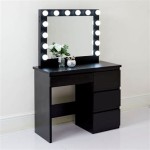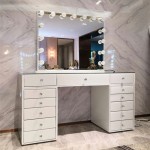Does Mirror Effect Spray Paint Work? Examining the Reality Behind the Reflective Finish
Mirror effect spray paint promises a convenient way to transform ordinary objects into reflective, mirror-like surfaces. The allure of achieving a highly reflective finish with just a few coats of spray paint is undeniable, but the practical reality often falls short of the idealized marketing claims. Understanding the capabilities and limitations of mirror effect spray paint is crucial for achieving satisfactory results and managing expectations.
While true mirrors are typically made with a thin layer of reflective metal, often silver or aluminum, applied to glass, mirror effect spray paints rely on a chemical composition designed to mimic this effect. These paints generally contain metallic pigments, typically aluminum flakes, suspended in a clear binder. When applied, the paint is intended to self-level, allowing the metallic flakes to align and create a reflective surface. However, the process is sensitive to various factors, including application technique, environmental conditions, and the substrate material.
Key Point 1: The Nature of "Mirror Effect" vs. a True Mirror
It is vital to distinguish between the "mirror effect" achieved with spray paint and the optical properties of a genuine mirror. A true mirror offers a high degree of reflectivity and image clarity due to the smoothness and uniformity of the reflective metal layer. The image reflection is sharp, undistorted, and preserves accurate color representation. This level of quality is not realistically attainable with current mirror effect spray paint formulations.
Mirror effect spray paints, on the other hand, produce a reflective sheen rather than a true mirrored image. The reflectivity is significantly lower than that of a real mirror, resulting in a dimmer and often slightly blurred reflection. The surface texture of the paint film, even when carefully applied, inevitably contains minor imperfections that scatter light and reduce image clarity. Furthermore, the metallic pigments used in these paints can impart a slightly grayish or silvery hue to the reflection, altering the color accuracy. Therefore, it is more accurate to consider the result as a polished metallic finish with reflective properties rather than a perfect mirror replica.
The reflective quality of mirror effect spray paint is also highly dependent on the viewing angle. Unlike a true mirror, which provides a consistent reflection across a wide range of angles, the reflection from spray paint may appear stronger or weaker depending on the angle of incidence of the light. This is due to the imperfect alignment of the metallic flakes and the textured surface of the paint film. In some cases, the reflective effect may only be noticeable under specific lighting conditions or from certain viewpoints.
Durability is another area where mirror effect spray paint falls short compared to a real mirror. The paint film is susceptible to scratching, abrasion, and chemical damage. Even minor scratches can significantly diminish the reflective quality of the surface. In contrast, the reflective layer of a true mirror is protected by a layer of glass, providing much greater resistance to physical damage.
Key Point 2: Factors Influencing the Outcome of Mirror Effect Spray Paint
Achieving the best possible results with mirror effect spray paint requires careful attention to several key factors. These factors influence the uniformity, reflectivity, and overall appearance of the finished surface.
Surface Preparation: Proper surface preparation is paramount. The substrate must be perfectly smooth, clean, and free of any imperfections. Any existing scratches, dents, or blemishes will be magnified by the reflective paint, resulting in an undesirable appearance. Sanding the surface with progressively finer grits of sandpaper is often necessary to achieve a flawless base. The surface should then be thoroughly cleaned with a degreaser or solvent to remove any contaminants that could interfere with the paint's adhesion.
Application Technique: The application technique plays a crucial role in the uniformity and reflectivity of the finish. It is generally recommended to apply multiple thin coats of paint, allowing each coat to dry completely before applying the next. Applying thick coats can lead to runs, drips, and an uneven distribution of the metallic pigments. The spray can should be held at a consistent distance from the surface and moved in smooth, overlapping strokes. Avoiding a heavy, saturated application is key to promoting proper self-leveling of the paint.
Environmental Conditions: The environmental conditions during application can also affect the outcome. High humidity can cause the paint to dry slowly and potentially lead to clouding or haziness in the finish. Extreme temperatures can also affect the paint's viscosity and drying time. It is generally recommended to apply mirror effect spray paint in a well-ventilated area with moderate temperature and humidity.
Use of a Base Coat: Many manufacturers recommend applying a specific base coat before using the mirror effect spray paint. This base coat is typically a smooth, glossy black enamel that provides a uniform and reflective surface for the mirror paint to adhere to. The quality of the base coat can significantly impact the final appearance of the reflective finish.
Top Coat Sealing: While a top coat can protect the reflective surface, it is often not recommended for mirror effect spray paints. Many clear top coats can dull the reflective finish and reduce the overall "mirror effect." If a top coat is necessary, it is essential to choose one that is specifically designed for use with metallic paints and apply it in very thin, even coats.
Key Point 3: Limitations and Alternatives to Mirror Effect Spray Paint
Despite its potential appeal, mirror effect spray paint has inherent limitations that make it unsuitable for certain applications. Understanding these limitations is essential for making informed decisions and exploring alternative methods of achieving a reflective finish.
One of the primary limitations is the durability of the finish. As mentioned earlier, the paint film is susceptible to scratching and abrasion. This makes it unsuitable for surfaces that will be frequently handled or exposed to wear and tear. Furthermore, the paint is often sensitive to certain chemicals and cleaning agents, which can damage the reflective surface.
Another limitation is the difficulty of achieving a truly flawless, mirror-like finish. Even with meticulous surface preparation and application, minor imperfections are often unavoidable. The reflective quality of the paint is also significantly lower than that of a real mirror, resulting in a dimmer and less accurate reflection.
For applications requiring a high degree of reflectivity and durability, alternative methods should be considered. These alternatives include:
True Mirrors: Standard glass mirrors offer the highest level of reflectivity, image clarity, and durability. They are the ideal choice for applications where a true mirror is required, such as bathroom mirrors, vanity mirrors, and decorative mirrors.
Acrylic Mirrors: Acrylic mirrors offer a lighter and more shatter-resistant alternative to glass mirrors. While their reflectivity is slightly lower than that of glass, they still provide a significantly better reflective surface than mirror effect spray paint. Acrylic mirrors are often used in applications where safety is a concern, such as gyms, dance studios, and children's play areas.
Metalized Films: Metalized films are thin sheets of plastic coated with a reflective metal layer. These films can be applied to various substrates to create a reflective surface. Metalized films offer a higher degree of reflectivity and durability than mirror effect spray paint and are often used in automotive trim, decorative panels, and architectural applications.
Chrome Plating: Chrome plating is an electrochemical process that deposits a thin layer of chromium onto a metal surface. This process produces a highly reflective and durable finish that is often used in automotive components, plumbing fixtures, and decorative hardware. Chrome plating is a more complex and expensive process than mirror effect spray painting, but it provides a superior level of performance.
In conclusion, while mirror effect spray paint can provide a reflective sheen to surfaces, it is important to recognize its limitations and understand that it does not replicate the qualities of a true mirror. The success of using this product relies heavily on meticulous preparation, careful application, and an understanding of its inherent limitations. For applications requiring high reflectivity, durability, and image clarity, alternative methods such as true mirrors, acrylic mirrors, metalized films, or chrome plating should be considered.

Mirror Effect Spray Paint Rust Oleum

Mirror Effect Spray Paint Rust Oleum

Testing Out A Mirror In Can Spray Paint

Spraying Liquid Mirror The Most Reflective Paint On Earth Real Deal

How To Spray Paint A Mirror Step By Guide

Rust Oleum Mirror Effect Spray 6 Oz Com

Rust Oleum Mirror Effect Spray Paint Review

Rust Oleum Silver Mirror Effect Multi Surface Spray Paint 150ml Diy At B Q

Antiqued Mirror Effect Thicketworks

Rust Oleum Specialty 6 Oz Mirror Effect Spray Paint 301494 The Home Depot








